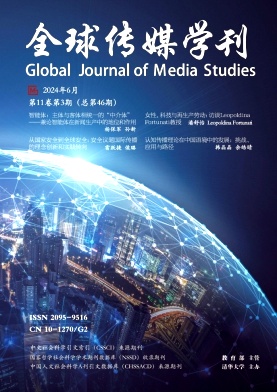数字时代集体记忆的媒介重构——对网络百科全书项目的分析
引用次数: 0
摘要
In the cyberspace, netizens form mutually recognized knowledge through interaction, becoming a typical way of constructing collective memory in the digital age. This study takes the "Lin Huiyin" entry on Baidu Baike and Chinese Wikipedia as research cases, and uses methods such as text analysis and network analysis to compare and analyze the differences in folk memory construction between different platforms based on the "three dimensions of text, discourse practice, and social practice" analysis framework. Research has found that in terms of text dimension, "Lin Huiyin" is constructed as a "woman in a subordinate position" on Baidu Baike, while in Chinese Wikipedia, it is constructed as an "independent person". In the process of discourse practice, compared to Chinese Wikipedia, Baidu Baike's "middle zone" producers exhibit lower self correction tendencies, weaker reciprocity, and more obvious centralization. The "back zone" discussants have higher enthusiasm, but there are significant differences in discourse power. In terms of social practice, Baidu Baike's memory group has a more stable identity and lower gender sensitivity compared to Chinese Wikipedia, and its memory has been reconstructed to some extent by the media. Research has shown that the "circle layer" attribute of the internet field creates multiple versions of folk memory, and specific memory objects will have multiple "existences" in the cyberspace.本文章由计算机程序翻译,如有差异,请以英文原文为准。
The Media Reconfiguration of Collective Memory in Digital Era: Analysis on the Internet Encyclopedia Item
在网络空间中,网民通过互动形成共同认可的知识,成为数字时代集体记忆构建的一种典型方式。本研究以百度百科与中文维基两大平台上的“林徽因”条目为研究个案,采用文本分析、网络分析等方法,基于“文本、话语实践、社会实践三向度”分析框架对比分析不同平台在民间记忆构建上的差异。研究发现,文本向度上,“林徽因”在百度百科被建构为“处于附属地位的女人”,而在中文维基百科中则被建构为“独立的人”。话语实践过程中,较之中文维基,百度百科“中区”生产者体现出较低的自我修正倾向、较弱的互惠性和较明显的集权性,“后区”讨论者的积极性更高但存在显著的话语权差异。社会实践向度上,百度百科记忆群体相对中文维基百科有着更为稳定的身份认同和更低的社会性别敏感度,且其记忆一定程度受到了媒介的重构。研究表明,互联网场域的“圈层”属性造就多个版本的民间记忆,特定记忆对象在网络空间中会有多个“存在”。
求助全文
通过发布文献求助,成功后即可免费获取论文全文。
去求助

 求助内容:
求助内容: 应助结果提醒方式:
应助结果提醒方式:


